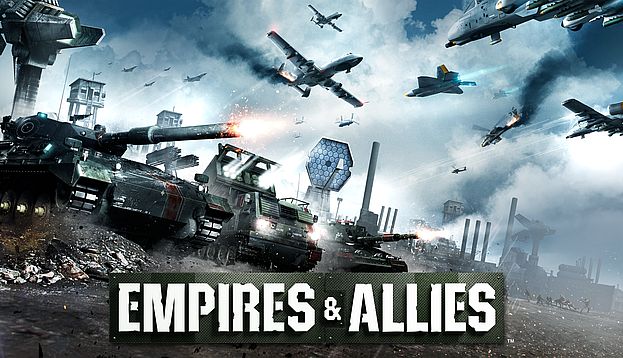Zynga today launched Empires & Allies, a new modern military strategy game for mobile platforms where players design their perfect army and deploy the weapons of modern war in a never-ending battle to save the world. The game is available today as a free download on the App Store for iPhone, iPad and iPod Touch and on Google Play. Developed by a seasoned team of developers, and led by real-time strategy (RTS) and social games pioneer Mark Skaggs, Empires & Allies gives players new levels of strategic choice and control in every battle.
 Mark Skaggs
Mark Skaggs
Mark Skaggs, senior vice president of games at Zynga sat down with [a]listdaily to give us some insights into the game and its marketing strategy.
How did you get from FarmVille to building a real-time strategy game for mobile?
Pincus hired me in 2008 to make an RTS game, but then it was Mafia Wars Myspace in HTML. We were actually working on something we called social RTS when Bing Gordon and Mark Pincus were like, “Why don’t you just make a farm game ” So we stopped everything, we pivoted, and we made FarmVille. If look in the FarmVille code it’s still called “Social RTS.” So we did that, and CityVille, and lots of other stuff, and two and a half years ago I was in Austin and I said, ‘This one’s going to end and I need to build an RTS team.” Because now I think mobile devices can handle it.
Up until about a year ago there was about twenty, twenty-five people on the team. Really tiny, focused, good people. The goal was ‘how do we take the Westwood style, Command & Conquer style RTS experience and put it on mobile in a way that feels good, feels fun, feels exciting, but fits the fact you can’t micro-manage units ” Your play session can’t be 45 minutes, it’s got to be three, and squeeze it onto this little device, squeeze it onto a phone, and have it look good and actually play it. That was the first goal.
How did you work out the balance of the game, and work that into something that monetizes well?
The game makers that came into Zynga had to go through the matrix, which is take all the knowledge you have and set it aside. Forget any way you had of doing things because this business works differently, and faster. Then we layer that knowledge and experience back in. When you can see what players are actually doing, it’s such a relief. The next step is knowing that there’s a pattern to play, and then machine learning to find the patterns and correlations that would take humans hundreds of years to find.
You’ve got to know the genre well enough to know what’s important and what’s not, and then once you’re there the data science behind it — making it free-to-play versus a $60 purchase, and then acquiring players to get into the game — there are so many more nuances than just make the thing, put it on the shelf at Best Buy.
How important are the social aspects of the game?
Somebody going “Hey what are you playing ” The organic virality that happens when people tell their friends “hey, you have to play this game!” You know the game genre well, you know the social side of it, but the community — we cal it player acquisition, running ads and acquiring players — they all form a key component of making this game a success. You can say you’ve got a good game, but if there’s not a community of people that support it and enough players to fight against, or you can’t acquire enough quality players, the whole thing just falls down.
Who’s your target audience for Empires & Allies?
First are the people who like modern military strategy games. We did some consumer research and found that of military, fantasy, ancient times — military strategy was at the top of consumer feedback. People want this type of game, and I think it’s for two reasons. There’s a little bit of a dearth with not a lot of games doing it close enough to realistic. So, first people who like military strategy games. The concentric circles that go out from it are people who like action games, and it’s a male-dominated genre. Quite different from FarmVille and CityVille, where the majority were women. We’re very much going after traditional strategy game players, 13 to 40 or whatever.
The game of of game making now is not only to make a good game, but to acquire game players profitably. That’s what soft-launching has taught us — how to do that. Beyond just testing the game, we’ve tested our player acquisition strategy. We’ve built a profile for different types of players in different countries. We put this together into another simulation, it’s a business simulation — “If we spend X for these players and they come in the expectations of LTV are this,” and “these players came in from a featuring so their window shoppers, very less likely to stay than hard-core players.” We’ve built a model that’s all about figuring out if you can be successful before you actually spend all this money.
It’s fun and invigorating for me, because it just feels like the next evolution of game-making. Before it was just “Can we get this thing to run with some pictures and noises on the screen ” Then you evolve into “Now it’s 3D, now it’s networked, now it’s online, now it’s free-to-play. Now it’s free-to-play on a mobile device and acquisition comes into play.” And we haven’t even talked about the data science behind this. We have algorithms looking for patterns that would take a person years to figure out. The nuances are incredible. It’s pretty fun, it’s pretty exciting.

